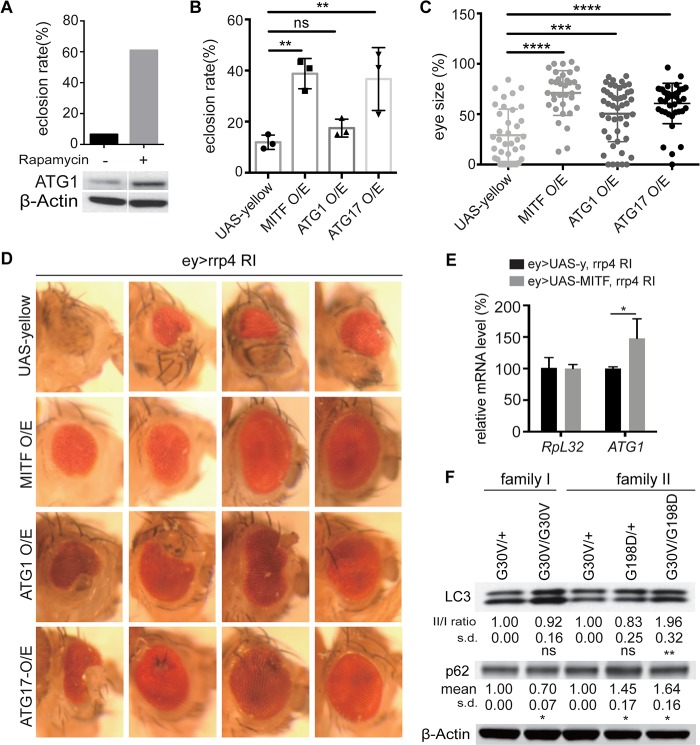Figure 6.

Rescue of rrp4 loss-of-function phenotypes by activation of autophagy. (A) Rescue of the eclosion rate of ey-Gal4>rrp4 RNAi flies by rapamycin treatment. Theoretical Mendelian rate is 50%. Western blot shows induction of ATG1 expression in rapamycin-treated ey-Gal4>UAS-rrp4 RNAi fly eye tissue. Data represent two biological repeats. (B) Rescue of the eclosion rate of ey-Gal4>UAS-rrp4 RNAi flies by UAS-MITF, UAS-ATG1 or UAS-ATG17 co-overexpression; UAS-yellow serves as control. The Mendelian rate is 50%. * and ** indicate P < 0.05 and P < 0.01, respectively, in one-way ANOVA test (n = 3). n.s, non-significant. Each group has 50–200 flies. (C) Quantification of ey-Gal4>UAS-rrp4 RNAi fly eye size after UAS-MITF, UAS-ATG1 or UAS-ATG17 co-overexpression. UAS-yellow serves as control. ** and **** indicate P < 0.01 and P < 0.0001, respectively, in one-way ANOVA test (n = 3). (D) Microphotographs of representative fly eyes of the indicated genotypes described previously. (E) qRT-PCR analysis of ATG1 mRNA level in ey-Gal4>UASrrp4 RNAi fly eyes rescued by UAS-MITF co-expression. * indicates P < 0.05 in Student’s t test (n = 3). (F) Western blot analysis of LC3 and p62 in B-lymphoblast cells from two EXOSC2-mutated families. Quantification of normalized LC3 II/I and p62 levels is shown under each panel. * and ** indicate P < 0.05 and P < 0.01, respectively, in Student’s t test (n = 4). n.s, non-significant; s.d, standard deviation.
